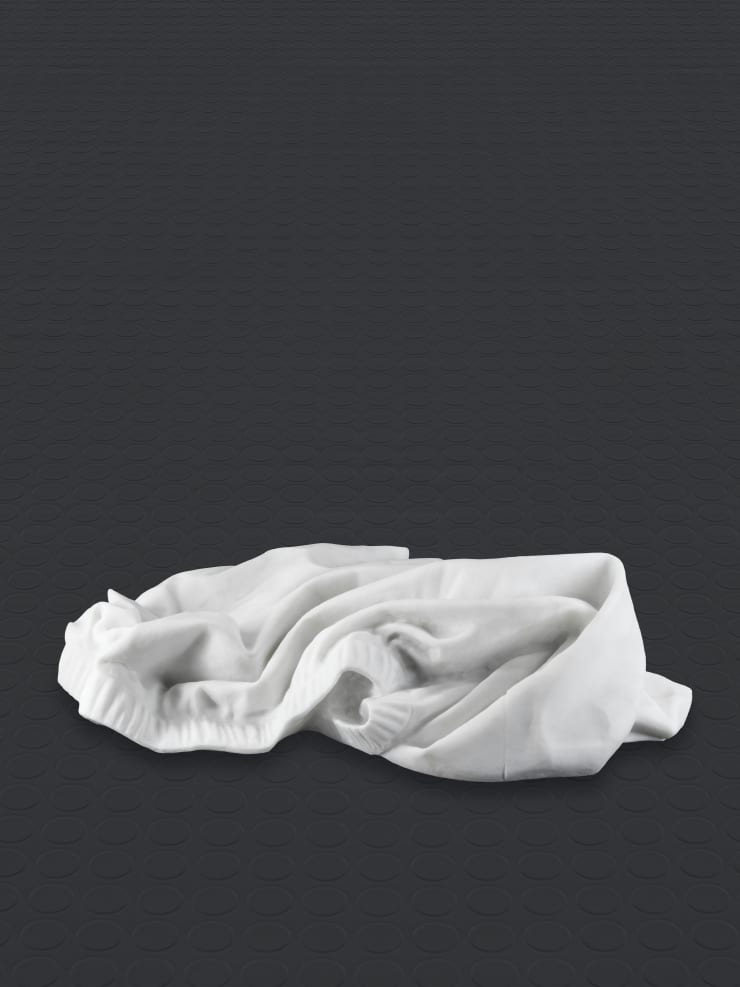Reza Aramesh
Biography
Iranian born British artist Reza Aramesh speak to our time of questioning beauty and its functions when our sensibilities and capacity towards beauty have come under assault. Aramesh looks at well known and iconic reportage images of suffering and displacement across humanity through recognisable narratives that are ingested with the help of global media streams and its reduction of visual culture in to bite-size portions of reality. Reportage images that survive the grinding mill of popularity are usually assigned iconic status but the reasoning for why that has become so is also often lost in the service of professionalism. The investment of ones time to build empathy towards a depicted subject, is often lost too. After identifying his source material in reportage imagery Aramesh sets out to transform their appearance into sculptural volumes that are based on European art his- tory and its hegemony of beauty in the service of power.
The results are often othered and unsettling works that are as equally desirable as they are objectionable. In the vernacular: the artist is asking us, through his works, to take our time and to absorb the events that places humanity and humanism under duress due to a larger myopia that visual culture has to endure in a time of attention economies. Operating within a balancing act to illuminate the fine line between empathy and cruelty, Aramesh has developed his artistic practice based on the question of what beauty does, as supposed to what beauty is.
Reza Aramesh who’s works across multiple media in sculpture, ceramics, textiles and photography looks at the notion of the historical sublime in art through the filter of contemporary reportage images of violence and horror as portrayed in media and the world of entertainment. His works operate in entendres of knowingness about the history of art, a deep sense of empathy for the subjects he depicts in the present and a delivery of irreverence, desire and beauty that has been focused into a reckoning for our age of tired watching, disinterest, spiritual lethargy and myopia.
Exhibitions
Works
-
 Reza ArameshACTION 274, Chikurubi Prison 17 April 2021 PROGRESSION #27, 2023Carved and hand polished Bianco Michelangelo marble33 x 35 x 7 cm
Reza ArameshACTION 274, Chikurubi Prison 17 April 2021 PROGRESSION #27, 2023Carved and hand polished Bianco Michelangelo marble33 x 35 x 7 cm
13 x 13 3/4 x 2 3/4 in -
 Reza ArameshACTION 285, Combinado del Este PRISON 20 October 2003 PROGRESSION #38, 2023Carved and hand polished Bianco Michelangelo marble37 x 33 x 8 cm
Reza ArameshACTION 285, Combinado del Este PRISON 20 October 2003 PROGRESSION #38, 2023Carved and hand polished Bianco Michelangelo marble37 x 33 x 8 cm
14 5/8 x 13 x 3 1/8 in -
 Reza ArameshACTION 292, Guayas 1 Prison 23 July 2023 PROGRESSION #45, 2023Carved and hand polished Bianco Michelangelo marble38 x 37 x 7 cm
Reza ArameshACTION 292, Guayas 1 Prison 23 July 2023 PROGRESSION #45, 2023Carved and hand polished Bianco Michelangelo marble38 x 37 x 7 cm
15 x 14 5/8 x 2 3/4 in -
 Reza ArameshAction 149.1: Study of the Head as Cultural Artefact, 2016PlasterW: 29cm, D:309cm; H:20.5cm Weight: 3kg
Reza ArameshAction 149.1: Study of the Head as Cultural Artefact, 2016PlasterW: 29cm, D:309cm; H:20.5cm Weight: 3kg -
 Reza ArameshAction 149.3: Study of the Head as Cultural Artefact, 2016PlasterW: 27cm, D:20cm; H:18.5cm Weight: 4kg
Reza ArameshAction 149.3: Study of the Head as Cultural Artefact, 2016PlasterW: 27cm, D:20cm; H:18.5cm Weight: 4kg -
 Reza ArameshAction 149.5: Study of the Head as Cultural Artefact, 2016PlasterW: 26.5cm, D:21.5cm; H:20cm Weight: Approx 5kg
Reza ArameshAction 149.5: Study of the Head as Cultural Artefact, 2016PlasterW: 26.5cm, D:21.5cm; H:20cm Weight: Approx 5kg -
 Reza ArameshStudy of the Head as Cultural Artefacts, 2016Hand Carved, polished Carrara Marble45 x 25 x 25 cm
Reza ArameshStudy of the Head as Cultural Artefacts, 2016Hand Carved, polished Carrara Marble45 x 25 x 25 cm
17 3/4 x 9 7/8 x 9 7/8 in








